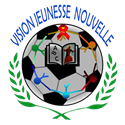


Rwanda,
often referred to as the "Land of a Thousand Hills," has made significant
strides in rebuilding and developing its education system following the 1994
genocide against the Tutsi. The genocide left the country devastated, with
widespread loss of life, destruction of infrastructure, and a generation of
children deprived of education. In the aftermath, the Rwandan government and
various international partners focused on rebuilding the education sector as a
crucial part of national recovery and long-term development.
The
Rwandan government has prioritized education as one of the key pillars of its
Vision 2020 and Vision 2050 development plans, recognizing that access to
quality education is essential for socio-economic growth, peacebuilding, and
national unity. The country adopted a policy of universal primary education,
which has significantly increased enrolment rates. Rwanda also made remarkable
progress in promoting gender equality in education, with a focus on ensuring
that girls and women have equal opportunities to access and complete education
at all levels.
Despite
these advancements, significant challenges remain. While primary school
enrolment rates have increased, the quality of education is still a concern due
to overcrowded classrooms, insufficient teaching materials, and inadequate
infrastructure, particularly in rural areas. Moreover, the transition from
primary to secondary education and from secondary to higher education remains a
challenge, with many students facing financial barriers or struggling with the
quality of education provided.
In
response, the Rwandan government, in partnership with various non-governmental
organizations (NGOs) and international agencies, continues to invest in
educational reforms, teacher training, the development of curriculum, and the
expansion of vocational and technical education. The introduction of ICT in
education is also a significant step toward modernizing the system and bridging
the gap between urban and rural education.
Rwanda’s
education program now aims to address both the quality and inclusivity of
education, ensuring that it caters to the diverse needs of its population,
including children from marginalized and vulnerable groups, such as those with
disabilities, children affected by poverty, and those living in
conflict-affected areas. These efforts are central to Rwanda’s commitment to
achieving the United Nations Sustainable Development Goal 4: to ensure
inclusive and equitable quality education and promote lifelong learning
opportunities for all
In 2010, Vision
Jeunesse Nouvelle (VJN) Rugerero was in its second year of operation. Initially
established as a branch of VJN Gisenyi, VJN Rugerero continued the
organization’s mission to support street youth and other vulnerable
populations. Education program had originally been based at VJN Gisenyi working
with 15 literacy sites in Gisenyi, Nyamyumba, Rugerero, Nyundo, Rubavu and
Cyanzarwe sectors of Rubavu districts, before moving to Rugerero due to the
expansion of the Cultural Center at Gisenyi, which had taken on numerous
activities. This move provided education program with a dedicated space,
allowing it to focus on delivering crucial educational services. The program
specifically catered to young people with deaf impairment, offering them
regular schooling and the support needed to ensure their success.
In the early days of Vision Jeunesse Nouvelle (VJN) VTC, the primary
vocational training courses included:
2. Welding
3. Architecture
4. Welding
5. Hairdressing
6. Automobile Mechanics
7. Arts


